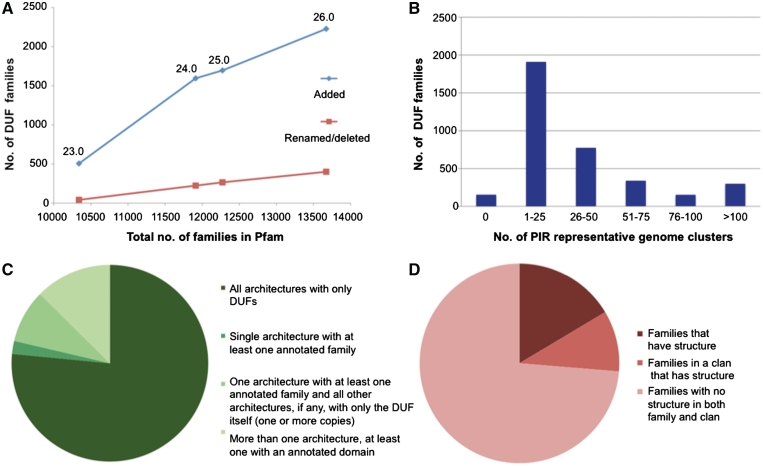Figure 5.
DUF families’ statistics. (A) Comparison between number of DUFs added (blue) and number of DUFs renamed or otherwise removed (red) since Pfam 22.0 (data shown for releases 23.0–26.0, as indicated by labels on the graph). (B) Number of PIR representative clusters of genomes (23) in DUF families. We used Representative Proteomes version 2.0, comprising a total of 671 clusters for a 35% membership cut-off. (C) Co-occurrence between DUFs and other families. The term ‘architecture’ refers to a combination of families occurring within the same protein sequence. Note that we only considered architectures with at least five member sequences. (D) DUF families and protein structure. ‘Families that have structure’ means that a PDB structure is available for a member of the family; ‘families in a clan that has structure’ means that a PDB structure is available for a member of the same clan.

